The Lower Elwha Tribe’s Natural Resources Department actively monitors fish populations and their habitats (see Habitat Restoration), while managing a diverse array of fisheries harvests (see Fishing & Hunting Regulations) throughout much of its Usual and Accustomed Fishing Areas. As with other Coast Salish Indigenous tribes, salmon are intricately woven into the culture of the Elwha Tribe, and much of the work of the Natural Resources Department is based on the importance of salmon and other culturally important fish species. The decline in salmon populations and the continued degradation of their marine, freshwater and riparian habitats throughout the Salish Sea have long been a source of concern to the Treaty Tribes of Washington State. Tribes have played a crucial role in assessment and monitoring of fish and their habitats, and in restoring critical habitat through riparian restoration programs.
To understand the health of fish populations, we evaluate the various components of their life history from spawning to rearing habitats through a range of monitoring and assessment activities, including adult salmon counts, juvenile salmon outmigration assessments, Redd counts, nearshore forage fish monitoring, lamprey assessment & habitat surveys.
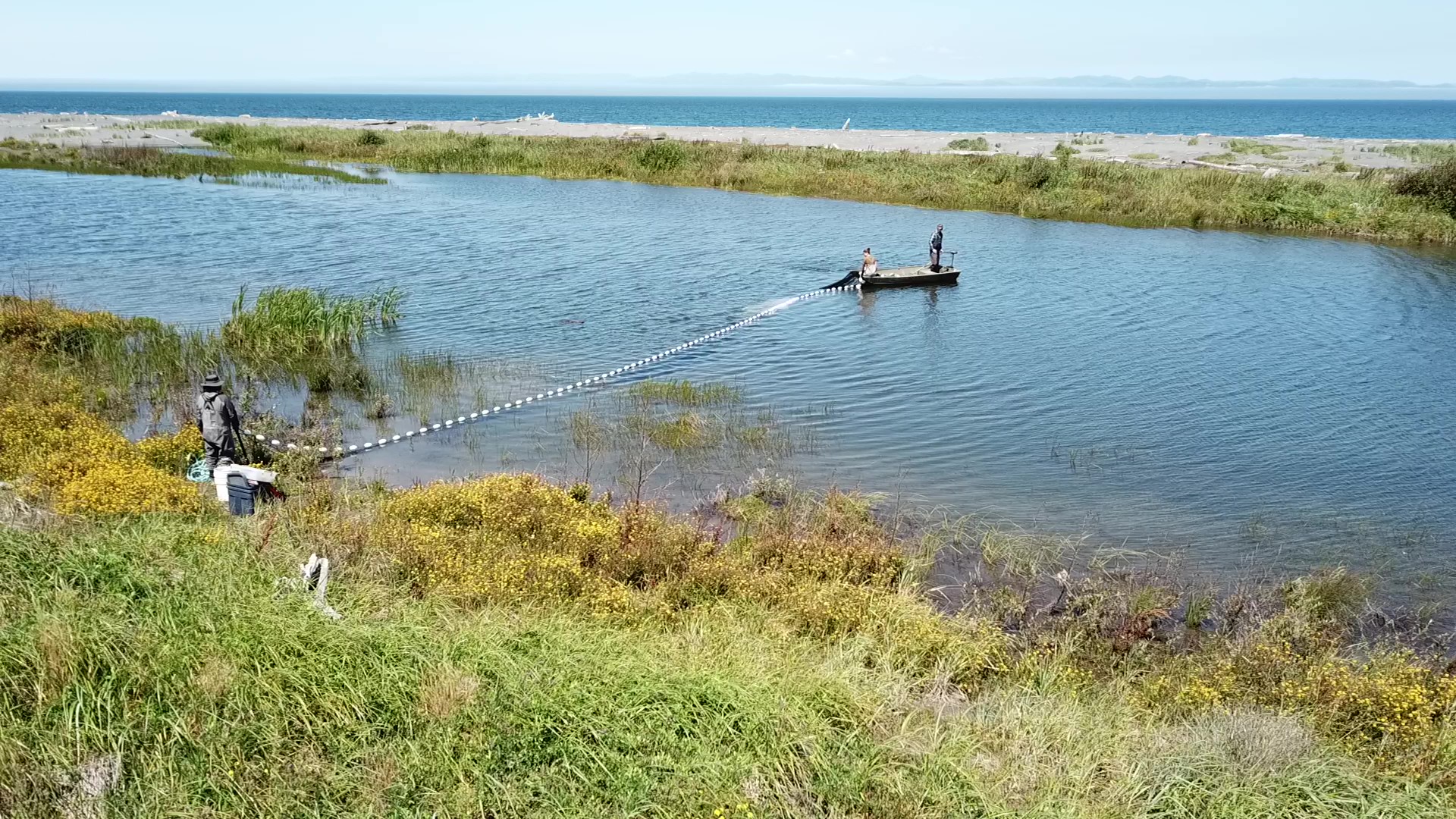
Adult Salmon Counts (Salmon In)
The number of salmon returning to a river system, and avoiding ocean mortality (fishing or predation), is known as escapement. Escapement is an important metric used to help predict salmon returns in future years. Estimating the abundance of populations of salmon in watersheds across the North Olympic Peninsula is a large part of the Department’s field activities. This information is used to track trends in populations and is used to inform the co-management of various fisheries in Washington waters by Washington’s Treaty Tribes and the State of Washington Department of Fisheries and Wildlife (WDFW). For example, estimates of the abundance of Coho salmon from Strait of Juan de Fuca watersheds is used in fisheries planning forums including the Pacific Fisheries Management Council.
We also use remote sensing to determine adult populations. On the Elwha River, we have two SONAR camera arrays set up which records the number of adult fish as they pass by. Once a week we net fish along the lower Elwha to determine the composition of species, as well as get growth data. This information is used to precisely estimate the abundance of Chinook, Coho and Steelhead.
Juvenile Salmon Outmigration (Salmon Out)
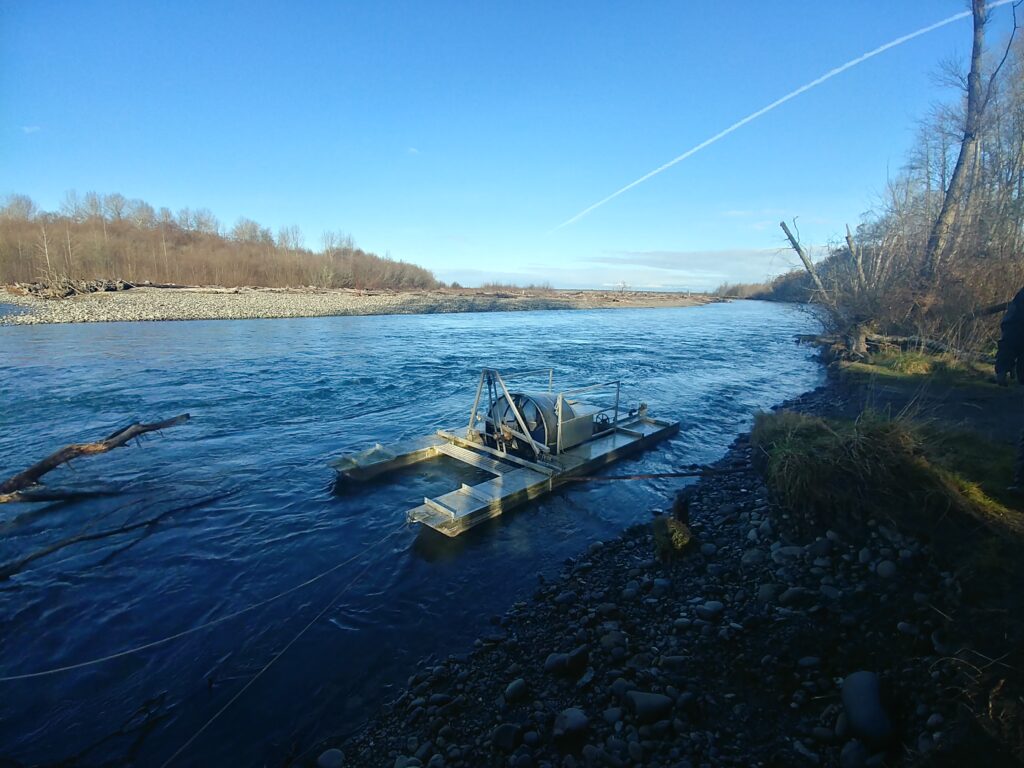
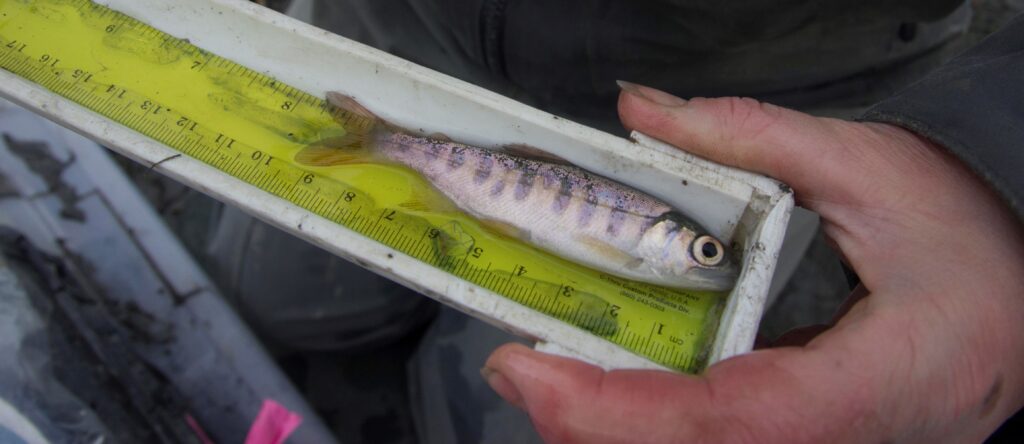
While monitoring the numbers of returning adults is important, we also assess the number of juvenile salmon, or smolts, that a given watershed may produce. From January to July (flow depending) we install and monitor four rotary screw traps that catch salmon and trout fry and smolts as they migrate to the sea. Using mark-release, recapture methods helps to refine our outmigration estimates by calibrating the capture efficiency of the traps. These traps are installed on the Elwha River mainstem, Little River and Indian Creek (tributaries to the Elwha. The number of smolts produced over time is an important metric used to assess the recovery of naturally produced salmon following dam removal on the Elwha River.
In 2017 we started using a fyke net, and later a fence weir, on upper Indian Creek to see what was fish species were emigrating from Nahkeeta (Lake Sutherland). These studies have resulted in the discovery of an unusually large-sized (up to 12 inch) sub-adult Coho population. Additional samples have been collected to analyze whether these fish are simply fast growing or if they are residualizing in the lake. As of 2022 preliminary data suggests that at least a portion of these fish are residents.
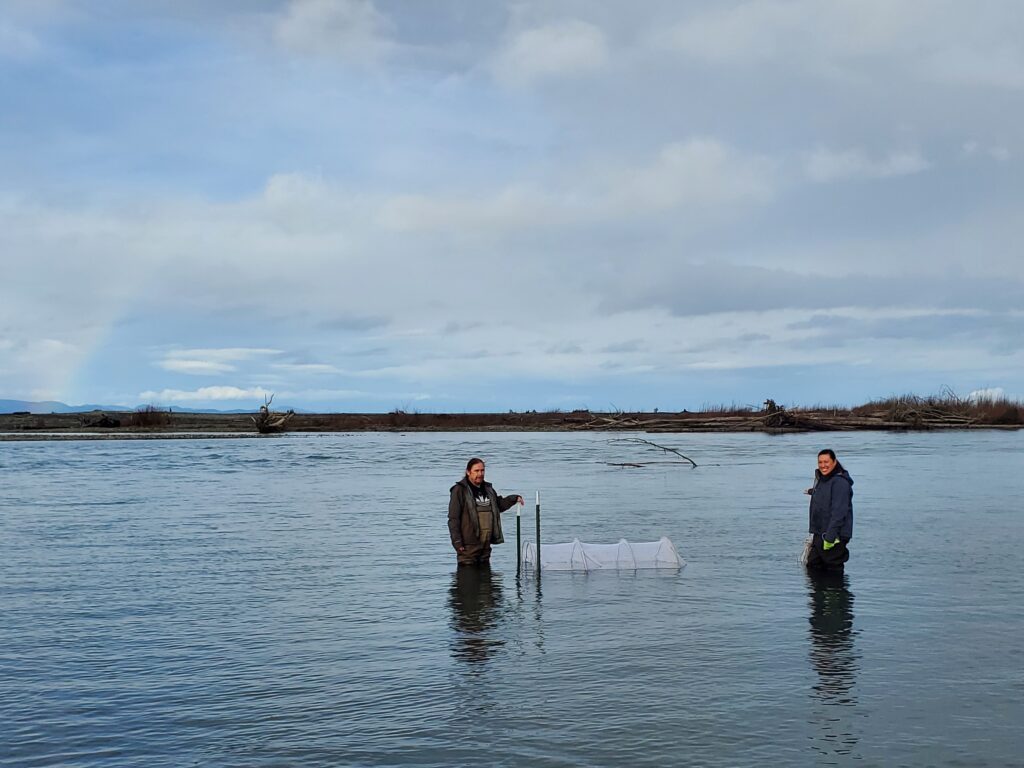
Each spring we also install fence weirs on independent Strait of Juan de Fuca tributaries including Deep Creek, West Twin, East Twin, and Salt Creek to count out-migrating Coho (Oncorhynchus kisutch) and Steelhead (Oncorhynchus mykiss) smolts. This information is used to assess long-term health of these watersheds, the effectiveness of long term restoration , as well as for fisheries management purposes. Strait of Juan de Fuca Coho are classified as a stock of concern in the PFMC process. The forecasted abundance of this stock is calculated from smolt trapping efforts by the Tribes and state.
Salmon Spawning Estimates (Redd counts)
Each year, on the Elwha River, the Tribe assists Olympic National Park (ONP), WDFW and Trout Unlimited in counting redds for Steelhead, Chinook (Oncorhynchus tshawytscha), and Coho during their respective spawning seasons. Chinook generally spawn from late August through early October, peaking in mid-September. Counting typically occurs later in the fall when the Tribe surveys for Coho redds on approximately two dozen streams from Morse Creek to Little Hoko, some of which have segments covered by WDFW. Redd counts are used to estimate adult populations and determine their spatial distribution.
Nearshore Forage Fish Monitoring
Natural Resource staff assists NOAA in monitoring nearshore changes of fish species from Freshwater Bay to Discovery Bay. This includes looking at whether restoration work on Ediz Hook is being utilized as spawning habitat for smelt and sand lance, and what use looks like near Ennis Creek before restoration work is done.
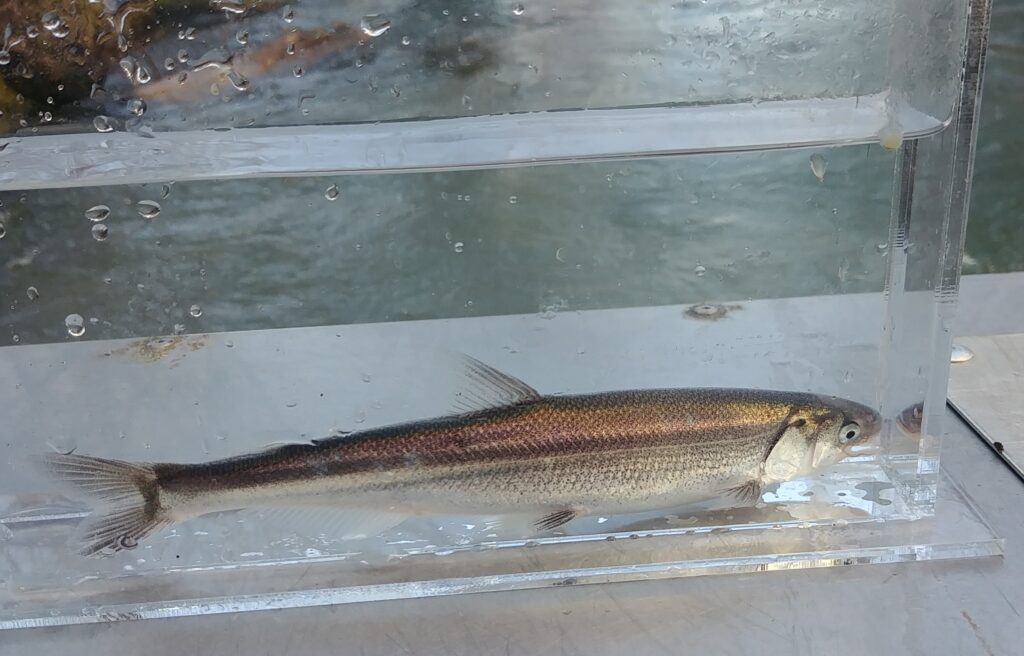
Eulachon (Thaleichthys pacificus) – also known as candlefish or hooligan- are a type of smelt that spawn in freshwater. Unlike salmon, they do not dig redds, instead relying on their eggs sticking to sand and small gravels. Once hatched the planktonic larvae are pushed out to the marine environment by river flows. The southern distinct population segment of eulachon is a federally listed threatened species. Use of the Elwha by eulachon was discovered by the Tribe during the course of its annual smolt trapping program. The Elwha is considered critical habitat for eulachon, but it is unknown how many eulachon use the Elwha for spawning. Several eulachon are caught every year in our screw trap off of Lower Elwha Road, and were encountered each year at Lyre River.
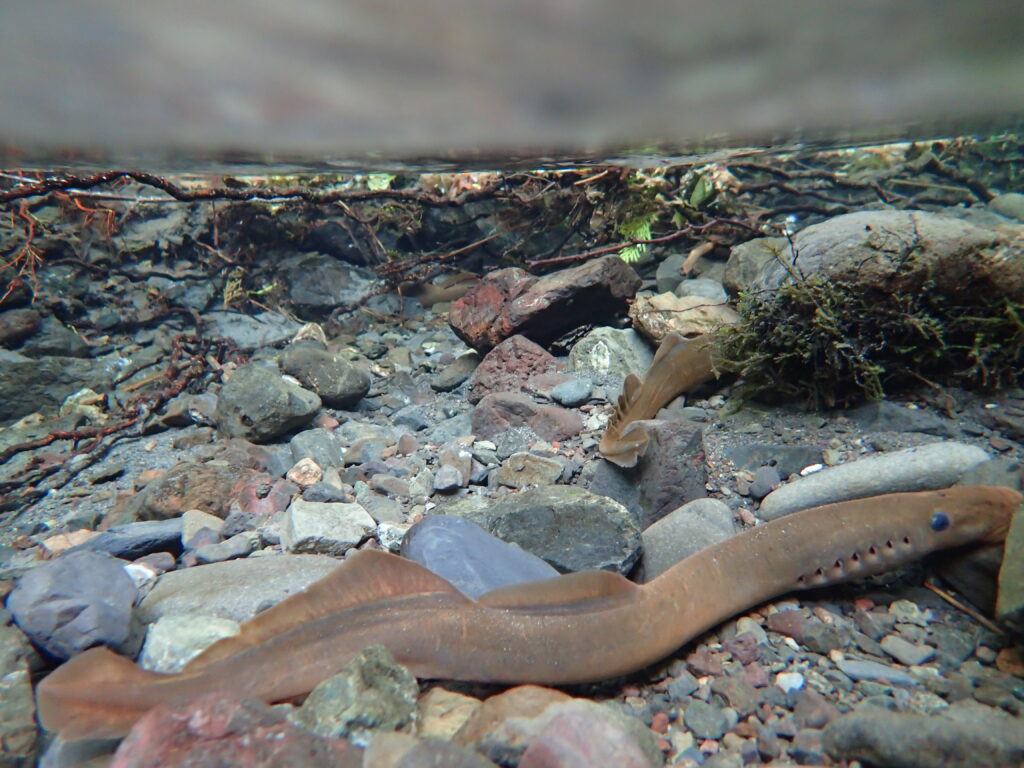
Pacific lamprey (Entosphenus tridentatus) are another important anadromous fish species. This ancient boneless, jawless fish is an integral component of Northwest river systems. Unlike salmon they do not primarily hone to their natal stream using chemical cues from the water, but instead rely on pheromones released from their larvae. Returning adult females may lay as many as 100,000 eggs. Lamprey are fatty and nutritious and an important food source for various animals including salmon, otters, eagles, and Salish peoples.
LEKT Natural Resources biologists with support of technicians have led research since dam removal which has demonstrated natural recolonization in the Elwha River. Our current data shows Pacific lamprey have successfully spawned as high as Hughes Creek
To learn more:
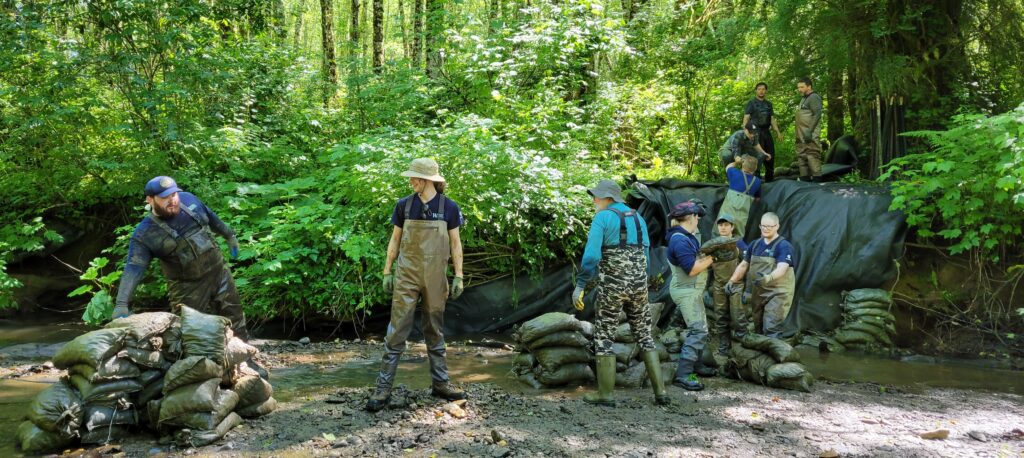
Want to get involved in Fisheries monitoring efforts!? Visit our News & Outreach page to sign up to become a volunteer in currently active projects.
